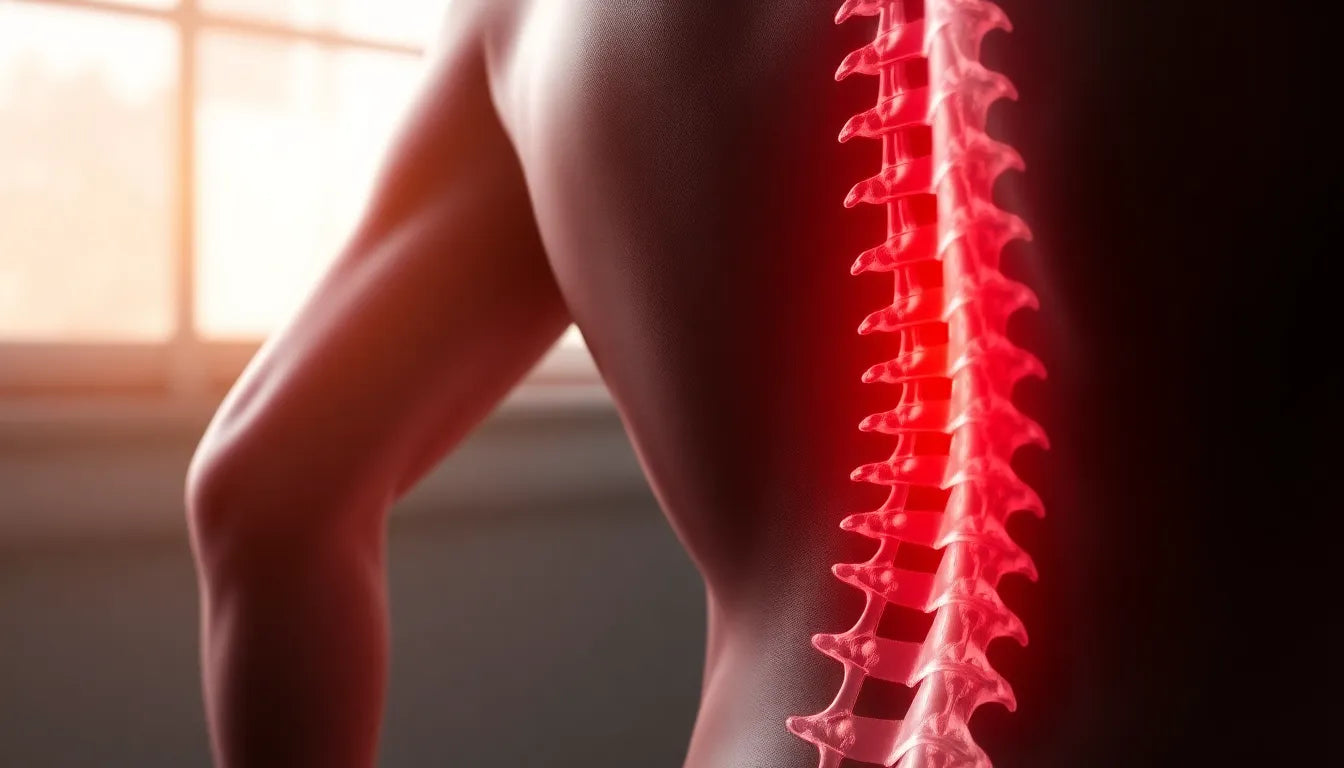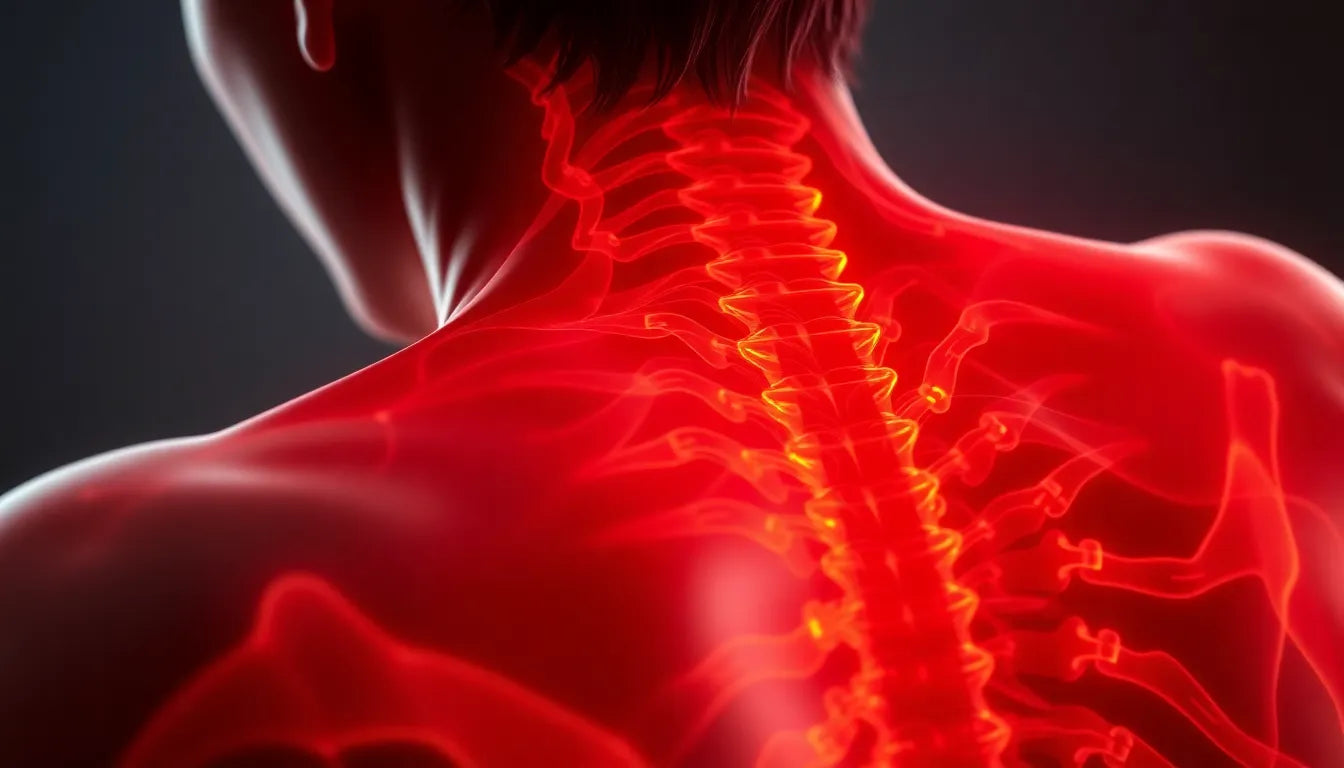Have you ever considered how much your spinal health influences your overall well-being? Often overlooked, the spine plays a crucial role in our daily comfort and posture. Among various spinal conditions, Scheuermann’s disease stands out as a lesser-known yet impactful disorder. It can subtly alter posture and appearance, significantly affecting one’s quality of life.
Understanding Scheuermann’s disease
Scheuermann’s disease is a developmental disorder of the spine characterized by vertebral wedging and a pronounced curvature known as kyphosis. This condition primarily affects adolescents, often going unnoticed until symptoms become more pronounced. The disorder results in a rounded upper back, sometimes leading to discomfort and self-consciousness in young individuals.
Typically, Scheuermann’s disease emerges during the growth spurts of adolescence, a time when the body undergoes rapid changes. Unfortunately, due to its gradual onset, it may not be immediately recognized, allowing for the potential progression of symptoms that can become more challenging to manage over time.
The importance of awareness
Recognizing and understanding Scheuermann’s disease is crucial for early detection and effective management. Awareness of this condition can lead to timely interventions that may prevent more severe complications. If left untreated, Scheuermann’s disease can result in chronic pain, reduced mobility, and long-term impacts on physical health.
Early diagnosis and treatment can significantly enhance the quality of life for those affected, helping to manage symptoms and prevent the progression of spinal deformity. By increasing awareness and understanding of Scheuermann’s disease, individuals and healthcare providers can work together to mitigate its hidden impacts and improve outcomes for those affected.
clinical characteristics of scheuermann’s disease
Scheuermann’s disease is marked by specific structural changes in the spine, primarily vertebral wedging that leads to kyphosis, a forward rounding of the back. This condition typically manifests during the early teenage years, aligning with the rapid growth spurts that occur during adolescence. The changes in the spine develop progressively, often becoming more pronounced over time if not addressed promptly.
The genetic component of Scheuermann’s disease cannot be overlooked. Research suggests that hereditary factors might play a significant role in its development. Families with a history of spinal disorders might see a higher prevalence of this condition, indicating a potential genetic predisposition. Understanding these genetic links is crucial, as it can guide early screening and intervention strategies.
symptoms and diagnosis of scheuermann’s disease
The symptoms of Scheuermann’s disease can vary, but common indicators include persistent back pain, poor posture, and a noticeable hunchback appearance. These symptoms often lead to a decrease in self-esteem, particularly in adolescents who are already navigating the challenges of body image during their formative years.
Diagnosing Scheuermann’s disease can be challenging due to its gradual onset and the subtlety of early symptoms. However, specific radiological findings are key to a definitive diagnosis. X-rays typically reveal anterior wedging of the vertebrae, irregular endplates, and sometimes Schmorl’s nodes. These radiological signs are critical in distinguishing Scheuermann’s disease from other spinal conditions.
Below is a diagram illustrating the typical spinal changes seen in Scheuermann’s disease, helping to visualize how vertebral wedging contributes to the condition’s characteristic kyphosis:

impact on daily life
The impact of Scheuermann’s disease extends beyond physical discomfort; it can significantly affect daily activities and social interactions. Adolescents, in particular, may experience a drop in self-esteem due to the visible changes in their posture. This can lead to social withdrawal and a reluctance to participate in activities that draw attention to their condition.
Recognizing the symptoms early is crucial in preventing severe deformity and improving the quality of life for those affected. Early intervention can mitigate the progression of the disease, allowing individuals to maintain a more active and fulfilling lifestyle. By addressing the condition promptly, it’s possible to reduce the physical and emotional burdens associated with Scheuermann’s disease.
In conclusion, understanding the clinical characteristics, symptoms, and potential impacts of Scheuermann’s disease is essential for early detection and management. By increasing awareness and knowledge about this condition, individuals can take proactive steps towards maintaining their spinal health and overall well-being.
Treatment and management of Scheuermann’s disease
Managing Scheuermann’s disease effectively requires a tailored approach that considers the severity of the condition and the individual needs of the patient. Common treatment options include physical therapy, which focuses on strengthening and stretching exercises to improve posture and alleviate pain. Physical therapists often develop personalized exercise programs that target specific muscle groups, helping to correct postural imbalances and enhance spinal alignment.
In cases where the curvature is more pronounced, bracing may be recommended. Braces are designed to support the spine and prevent further progression of the kyphosis during growth spurts. They are typically worn by adolescents until they reach skeletal maturity. For severe cases that do not respond to conservative treatments, surgical intervention might be considered. Surgery aims to correct the spinal curvature and stabilize the spine, often involving spinal fusion techniques.
Beyond these medical interventions, lifestyle modifications play a crucial role in managing Scheuermann’s disease. Ergonomic aids, such as adjustable chairs and desks, can support better posture during daily activities. Encouraging regular physical activity and maintaining a healthy weight are also important for reducing stress on the spine and improving overall health.
Prognosis and long-term outlook
The long-term outlook for individuals with Scheuermann’s disease varies depending on the severity of the condition and the timeliness of intervention. With early detection and appropriate management, many individuals can lead active and fulfilling lives without significant limitations. Consistent monitoring and adherence to treatment plans are crucial to prevent the progression of spinal deformity and associated complications.
While the condition can be challenging, proactive management can mitigate its effects. By focusing on early intervention, individuals can maintain mobility and reduce the risk of chronic pain. It is essential for patients and healthcare providers to work collaboratively to develop a comprehensive management plan that addresses both the physical and emotional aspects of living with Scheuermann’s disease.
Frequently Asked Questions
What causes Scheuermann’s disease?
Scheuermann’s disease is believed to have a genetic component, with growth-related factors also playing a role. It occurs when the vertebrae grow unevenly, leading to the characteristic wedging and curvature of the spine.
How is Scheuermann’s disease diagnosed?
Diagnosis typically involves a clinical evaluation and imaging techniques such as X-rays. Radiological findings, including anterior vertebral wedging and irregular endplates, are key indicators of the condition.
Can Scheuermann’s disease be prevented?
While the exact cause is not fully understood, early detection and intervention are crucial. Regular check-ups during adolescence can help identify the condition early, potentially preventing severe progression.
What are the treatment options for Scheuermann’s disease?
Treatment options range from physical therapy and bracing to, in severe cases, surgery. Physiotherapy focuses on exercises to improve posture and reduce pain, while braces can help prevent further curvature during growth.
How does Scheuermann’s disease affect daily life?
The condition can impact physical activities and self-esteem, especially in adolescents. However, with appropriate management, individuals can effectively manage symptoms and maintain an active lifestyle.
Sources
- Radiological imaging findings of Scheuermann disease - PMC.
- Scheuermann's Kyphosis | University of Maryland Medical Center.
- Scheuermann's Kyphosis - Physiopedia.
- Scheuermann Disease - StatPearls - NCBI Bookshelf.
- Symptoms and Diagnosis of Scheuermann's Disease - Spine-health.
- Scheuermann's Kyphosis (for Parents) | Nemours KidsHealth.
- Scheuermann's disease - Wikipedia.



